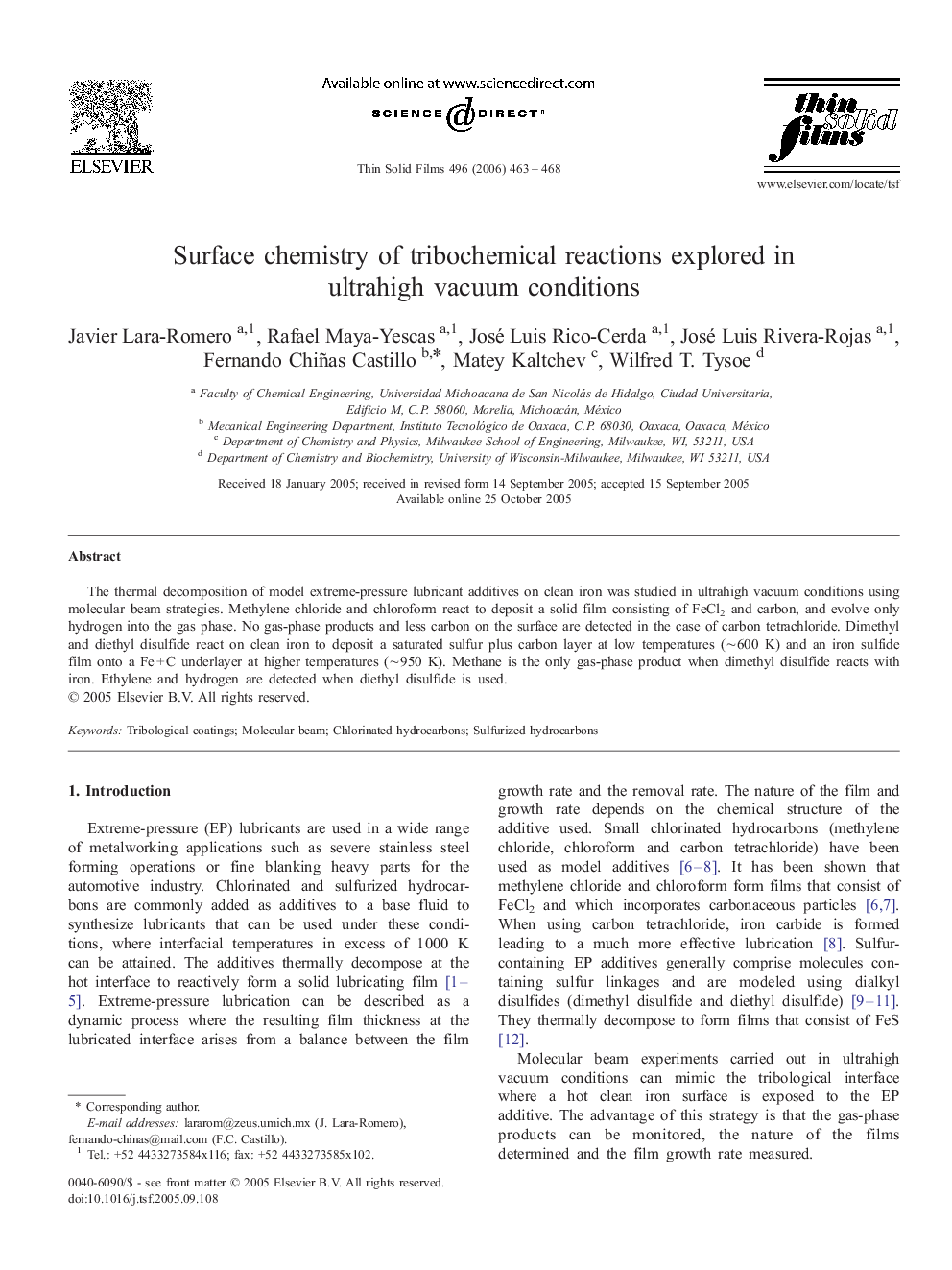| کد مقاله | کد نشریه | سال انتشار | مقاله انگلیسی | نسخه تمام متن |
|---|---|---|---|---|
| 1676643 | 1009005 | 2006 | 6 صفحه PDF | دانلود رایگان |

The thermal decomposition of model extreme-pressure lubricant additives on clean iron was studied in ultrahigh vacuum conditions using molecular beam strategies. Methylene chloride and chloroform react to deposit a solid film consisting of FeCl2 and carbon, and evolve only hydrogen into the gas phase. No gas-phase products and less carbon on the surface are detected in the case of carbon tetrachloride. Dimethyl and diethyl disulfide react on clean iron to deposit a saturated sulfur plus carbon layer at low temperatures (∼600 K) and an iron sulfide film onto a Fe + C underlayer at higher temperatures (∼950 K). Methane is the only gas-phase product when dimethyl disulfide reacts with iron. Ethylene and hydrogen are detected when diethyl disulfide is used.
Journal: Thin Solid Films - Volume 496, Issue 2, 21 February 2006, Pages 463–468